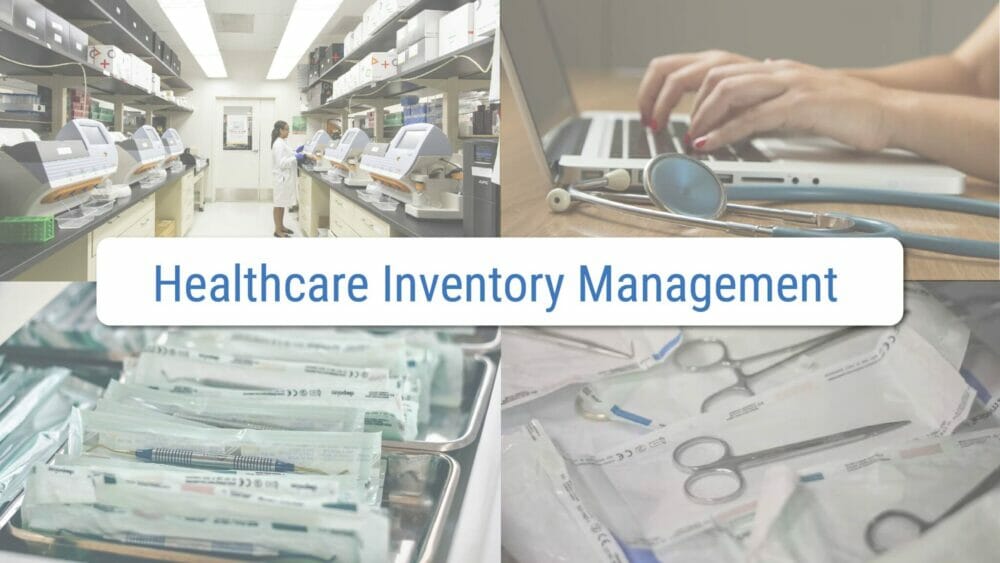
Healthcare systems would fail without enough medical supplies. The recent pandemic highlighted what can happen when a healthcare facility runs out of supplies, such as gowns, gloves, and masks.
While it’s not every day that hospitals face a pandemic, having a robust inventory management system can play a big part in keeping a healthcare facility running smoothly.
What is a healthcare inventory management system?
Healthcare supply managers are responsible for ensuring that the right supplies are available at the right time and in the right location. The system used to maintain this balance is the inventory management system.
Most healthcare inventory managers today use digital systems to track the flow of millions of medical products, like syringes, gloves, gowns, scalpels, sutures, and scissors. Tracking requires systematic documentation of supplies from the time of ordering to the time of use, disposal, or reprocessing.
This article will examine a few key reasons facilities should invest in high-quality supply management systems. We’ll also talk about some tools of the trade and why it’s worth choosing systems that integrate well together.
Why do healthcare facilities need an inventory management system?
What are three healthcare system goals that keep hospital managers up at night?
- Patient safety,
- hospital costs, and
- compliance with government regulations.
Now let’s look at how a robust inventory management system can contribute to meeting these goals, and allow managers to get more rest.
- Patient safety
- Automated reorders can prevent stock-outs and possible treatment delays
- Reduce staff time spent locating extra supplies
- Enable staff to quickly locate and pull products from the supply chain in the event of a manufacturer recall
- Trace recalled devices to patients by using unique device identifiers (UDIs)
- Cost control
- Prevent overstocking or lost supplies
- Ensure that supplies with expiration dates, such as drugs, vaccines, and liquids, are used on a first-in, first-out basis
- Gather data that can assist in the identification and investigation of supply or drug thefts
- Regulatory compliance
- Track controlled substances (The Drug Supply Chain Security Act of 2013 prevents unsafe drugs from entering the supply chain by monitoring and tracking some prescription drugs through the U.S. healthcare system)
- Trace medical devices (The unique device identification (UDI) system was established by the Food and Drug Administration to protect patients by optimizing device traceability and reducing errors)
Which tools are best for managing healthcare inventory?
Hospitals increasingly rely on digital and web-based technologies to keep records, send information, and track assets.
Digital or web-based inventory systems help supply managers monitor the flow of supplies and control the timing of restocks. Using technology that uses data points to predict stocking needs can provide even tighter control of the supply flow and cut costs.
Barcoding
Barcodes are attached to supplies such as medication and specimens and scanned into an inventory system using a hand-held scanner. The recorded information is beneficial for supply management but can also be used to collect data on supply use trends.
Barcoding and scanning are manual procedures and are prone to missed scans. Barcode technology may be more efficient than paper or a computer spreadsheet, but it still requires staff time.
Radio Frequency Identification (RFID)
RFID, while similar to barcoding, is a newer technology that automatically tracks inventory, staff, and even patients.
An RFID system consists of a tag and a tag reader. As an RFID tag passes by a tag reader, the system records the location of the item or person.
The technology can be embedded in wristbands, alerting staff if a patient wanders off the unit; staff badges, allowing individual access to controlled areas; and medical equipment.
RFID technology can operate independently of staff involvement, reducing labor costs. RFID systems reduce supply costs by using analytics to manage the supply chain and track assets.
RFID technology isn’t foolproof. Liquids and metals, commonly found in healthcare facilities, block the transmission of RFID electromagnetic waves.
While RFID systems streamline and contribute to the efficiency of a hospital’s inventory management system, they rely on computer software and the internet and are at risk of internal or external cyberattacks.
RFID systems also cost more than a barcode system, although this cost should be offset by the cost savings of a more efficient system.
Management should consider whether it’s ethical to collect patient information and track people. Any internet-based inventory system must be backed up by a robust security system that prevents hacking and complies with HIPAA.
Automated Inventory Management Systems
Data gathered by barcoding and RFID systems, or point of use (POU) systems, may flow through to an automated inventory management system. Thus the data trail extends from the supply vendor to the end-user or disposal.
Systems with artificial intelligence (AI) or machine learning can learn to predict what supplies to order, how many to order, and when to order them, all based on historical trends and real-time data.
An automated inventory management system’s ability to predict supply and demand saves time and money and may reduce patient risk by ensuring adequate supplies are available when needed.
However, the accuracy of an organization-wide inventory management system depends on its ability to integrate with POU technology.
And because automated systems are managed remotely over the internet, there is always a risk of cyberattacks. It’s important to use best practices, and a strong web security system, to protect patient data.
Inventory management systems add structure and strength to a hospital system. When choosing supply chain tools, patient safety, cost control, and regulatory compliance are important goals to consider.

Cindy Blye
Content WriterCindy Blye, BSN, RN, CCM is a Registered Nurse and Certified Case Manager. She is an Alumni of West Virginia University School of Nursing (BSN), and a member of the Association of Health Care Journalists and The Authors Guild.